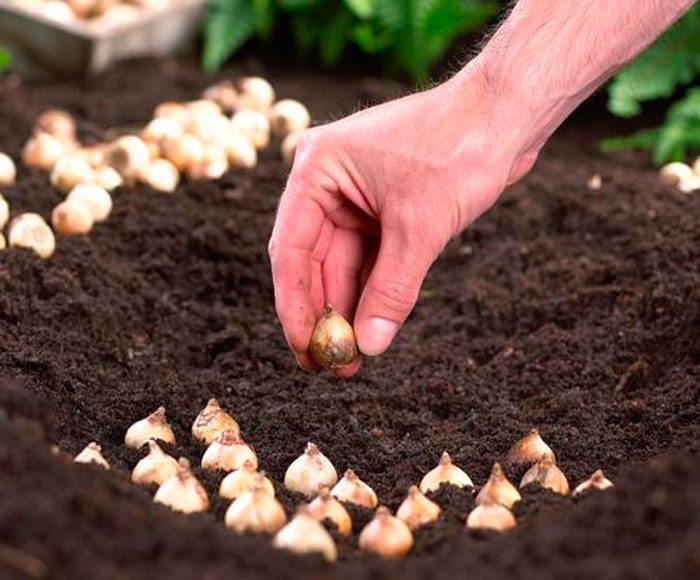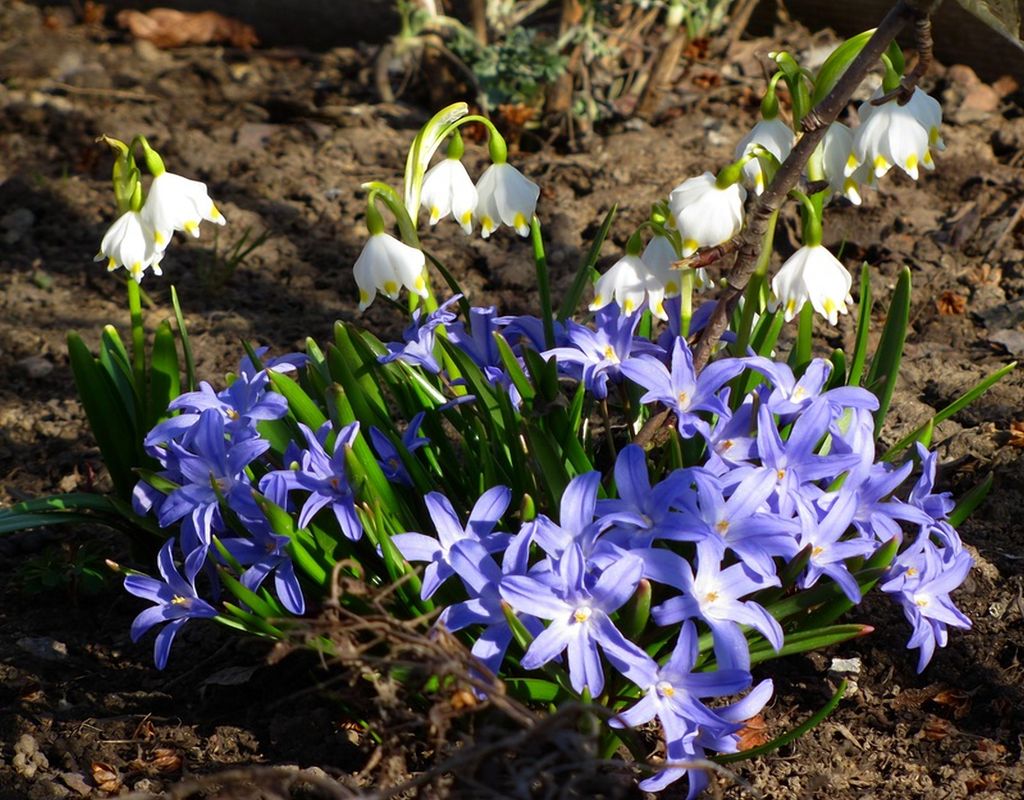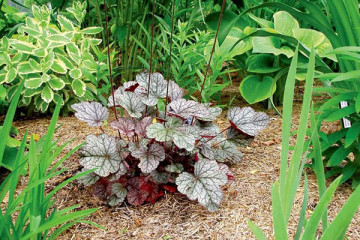Chionodoxa planting and care in the open field
Content:
Chionodoxa is a short perennial flower from the Liliaceae family. The culture has earned its popularity due to the fact that it is distinguished by early abundant flowering. The plant appears as soon as the snow melts and blooms magnificently during the spring.
general characteristics
Chionodoxa is a plant belonging to the genus Scilla in the asparagus family. In total, the species has 6-8 representatives. The first mention of the flower appeared in 1877. The plant got its name in honor of the wife of a naturalist from Switzerland, Pierre Amond Boissier Lucille.
The height of the bushes is from 10 to 20 cm. Each flower has 2 lance-shaped leaf plates. The length of the leaf is up to 12 cm. The shade is dark green, saturated.
Each bulb produces a peduncle, at the end of which a cluster of 3-5 buds is collected. The average flower diameter is 4 cm. The color of the buds depends on the variety. Basic shades: blue, deep blue, white, lilac, lilac and pink.
After flowering, the plant bears fruit - boxes with seeds. Reproduction of flowers occurs in a bulbous way.
Species diversity
Experts count from 6 to 8 plant varieties. Chionodox flowers have common species characteristics, but at the same time they have distinctive properties that allow them to be distinguished into a separate category.
Chionodoxa Forbes (Latin name - Chionodoxa forbesii)
The second name of the flower is Chionodox Tmoluza. The culture is large. Its bushes reach 25 cm. The plant forms strong peduncles, each of which forms up to 15 buds. Color range of colors: from white to pink.
Common varieties:
- Chionodoxa Giant Alba (Chionodoxa Alba);
- Pink Giant (large variety with a pink tint with a lilac tint);
- Chionodoxa Blue Giant.
Chionodoxa Lucilia (Latin name - Chionodoxa luciliae)
Otherwise, this variety is called Chionodoxa giant. The natural habitat of the flower is the mountains of Asia Minor. The plant reaches 20 cm. Inflorescences form no more than 10 buds with small flowers. The petals of flowers are blue with a white center. During the flowering period, there is a gradual blooming of the buds.
Experts distinguish several main varieties:
- Chionodox Lucilia Alba. Differs in white and small size. Peduncles do not exceed 10 cm. Flowers of Chionodoxa Lucilia Alba are large in size. When unfolded, they reach a diameter of 4 cm.
- Chionodoxa Rosea. The variety was named for the delicate pink shades of the buds. Chionodox Rosea has many varieties. Rosie Queen and Pink Queen flowers are more popular than others.
- Chionodoxa Violet Beauty. This variety appeared in 2009. Its height does not exceed 8 cm. Flowers are painted in purple and dark blue shades, have a white core.
Chionodoxa sardinian (Chionodoxa sardensis)
This type of plant was discovered in Asia Minor. It belongs to tall (up to 12 cm in height), forms 10 buds, a rich blue hue. The flowers are not large, rarely exceed 2 cm in diameter.Chionodox sardensis became widespread after 1885. It includes a large number of hybrids with pink and white flowers.
Hybrids
These plants were obtained by crossing pure species. They have intermediate features. Popular Chionodox hybrids:
- Watercolor. Differs in flowers of a pale lilac shade with a white core. It has wide petals.
- Absolute. This is a hybrid of a higher level of adaptation to adverse conditions. The flowers have a delicate lilac color with a blue tint.
- Artemis. The bushes of the plant are low, reaching 10 cm. The flowers of this chionodoxa are wide-petaled, have a rich blue color.
- Aphrodite. The hybrid is distinguished by large flowers with long petals, the shade is snow-white.
- Arctic. A short hybrid with snow-white flowers.
- Andromeda. The hybrid features bright blue colors with contrasting white centers.
A distinctive feature of hybrids is increased resistance to diseases and the best indicators of winter hardiness.
Breeding features
Chionodox are bulbous plants. They reproduce vegetatively. For breeding, the mother plant is dug out of the ground in the last days of July. The bulb is shaken off the ground and divided into smaller bulbs. They are stored in a cool, dark place until autumn. The bulbs are sown in September or early October.
Another breeding method is soil sowing with seeds. Such plant breeding is rarely used, because the culture blooms only for 3-4 years. Another reason for the ineffectiveness of the method is that the fleshy part of the seeds is a delicacy for ants, so the insects quickly take them apart. Self-seeding often occurs, and then the plant grows wild.
Landing on the site
When growing Chionodox primroses, planting and grooming outdoors plays an important role in lush flowering. Bulbs are planted in the first weeks of September.
Procedure:
- The site is chosen fertile with neutral acidity. The soil is pre-dug up. Sod, sawdust, humus are embedded in the soil.
- In the prepared flowerbed, recesses are dug at intervals of 10 cm.Depending on the size of the bulbs, the depth of the holes ranges from 5 to 10 cm.
- The bulbs are placed in the center of the hole and covered with soil.
- Saplings are spilled with water and fed with nitrogen-containing fertilizers.
Features of agricultural technology
Chiondohox are resistant to adverse natural phenomena, easily take root during transplantation.
Basic procedures for caring for chionodox:
- Lighting. Plants are light-requiring. Flowers prefer lighted areas or a little shade.
- Watering. Flowers need moderate watering in the morning. Water is used settled, warm.
- Mulching. Flowers respond positively to this procedure. Spruce needles and moss are used as mulch.
- Loosening. The process improves soil aeration. Loosening is combined with weeding and carried out the next day after watering or heavy rain.
- Top dressing. Complex fertilizers are applied 2-3 times per season. Dry mixtures are evenly distributed over the area, mixing with the soil when loosening.
- Transfer. It is recommended to replant plants at the end of July. They are dug up along with the bulbs and stored in a cool dark place. Plants are planted in a permanent place in the fall.
- Wintering. In regions with severe frosts and winds, when the temperature drops to 5 degrees below zero, the flower beds are covered. Bushes left without shelter are mulched with needles or covered with spruce branches.
Flowering features
Chionodoxes are primroses. Their flower stalks are formed in the middle of spring. Lush flowering. When planting crops in shaded areas, flower stalks last longer. Chionodox Blue Giant has flowering for 20 days. The giant Chionodox Alba also blooms for a long time.
On average, no more than 14 days pass from the moment of blooming to the moment of wilting of the peduncle. The buds of some hybrids bloom in steps. An example of such a plant is the Chionodoxa cultivar Luc Rosea. Thanks to this feature, gardeners enjoy blooming for a month.
Diseases and pests
Often, fungal diseases are found in chionodox. Most damage is caused by septoria and fusarium. Often the culture is affected by gray rot. Signs of damage to the bulbs: yellow pigmentation, shedding of leaf plates, drying of the stems. For the prevention of diseases, pre-planting of the bulbs is carried out.
Of the pests for the flower, meadow mites and rodents are dangerous. To combat the larvae, Fitoverm and Akarin are used. Traps are placed in flower beds against small rodents.
Use in garden design
The Chionodox plant is used to decorate gardens and parks. It can be seen in front of shrubs or on alpine hills, often the flower is combined with other bulbous plants. Chionodoxa Blue Gigant looks good with snow-white Pushkinia. Chionodoxa Alba pairs beautifully with irises. Light hybrids of Chionodox Forbes are in harmony with Sparaxis and Ixia.
These unusual and attractive flowers become a decoration of any garden in the springtime. Chionodox are distinguished by their unpretentiousness, they easily adapt to any conditions. Due to its resistance to frost, the crop is suitable for cultivation in the central and northern regions. Subject to the rules of agricultural technology, chionodoxes delight gardeners with a lush color for a long time.





















